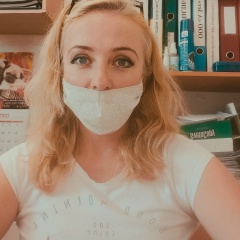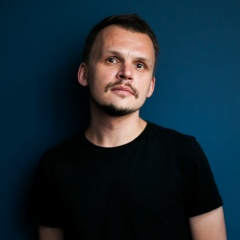Из беседы с Дмитрием Сергеевичем Лихачевым (начало 1990х годов):
У нас отсутствует воображение. Мы не можем себе представить, что такое была блокада. И если бы люди хоть немножечко, хоть на одну десятую часть понимали, что такое блокада, если бы они представляли себе, как трудно было просто передвигаться по улице, как трудно было спасать культурные ценности, особенно книги, картины, антикварные вещи у тех старых ленинградцев, которые еще хранили их с дореволюционных времен. Как это все было трудно! Как это делалось иногда просто потому, что жалко вещи, жалко книг, а не из каких-нибудь корыстных соображений. Ведь это же все были герои…
К фольклористу Колецкому пришли и увидели такую картину: водопровод не действовал, поэтому носили по лестнице воду, расплескивали воду из ведер, и лестница вся представляла собой колоссальный ледник, по которому полз лёд. Лёд сам сползал вниз. Обледенелая лестница такая. И вот жители верхних квартир, они не могли уже спуститься и не могли закрыть дверь, потому что надо было сколоть этот лед с порога, а они не могли. И вот пришли в такую квартиру и увидели, что вся семья Колецкого лежала мертвой.
Если это всё представить себе, конкретно, как они умирали, как они читали друг другу стихи, чтобы забыться, чтобы не думать о еде, потому что самое страшное было – думать о еде. И это поразительно, что в это время творческая сила людей особенно возрастала. Значит, он и знал, что он умрет, и чтобы сохранилось от него хоть что-то, писали дневники, мемуары, архитекторы чертили фантастические здания, которые должны были быть потом построены. Художники усиленно, как Билибин, рисовали, например, перед смертью, писали картины и так далее. Усиленная творческая деятельность.
Вот если бы все это представить себе конкретно, изучить психологию умирающих людей, изучить творческую деятельность, собрать все то, что было тогда сделано великого и потом осуществлено (потом ведь осуществлялось многое из того, что во время блокады было замыслено), то тогда было бы уважение людей.
Но не хватает воображения! Люди не думают. Ведь многие, живущие в Ленинграде сейчас, не знают, кто умер в их квартире, кто жил здесь, не интересуются историей блокады. Ещё если и интересуются историей Петербурга, то Петровского времени, ХVIII веком, или ХIХ веком, но блокадой, этим поразительным феноменом культуры и умственной жизни, не интересуются. Ведь они не знают, что было во время блокады создано. Ведь это же надо было «Золотую книгу блокады» написать. Не об ужасах блокады только, а о том, что люди сделали во время блокады, какие были учителя – поразительные, которые учили детей, как себя вести в эти блокадные дни, обходили своих учеников. Ведь учитель чувствовал себя ответственным за учеников, ходил по квартирам к ученикам своим и смотрел, кто жив, кто нет. Ободрял. Кто сейчас вспоминает этих учителей в школах? Их забыли.
У нас отсутствует воображение. Мы не можем себе представить, что такое была блокада. И если бы люди хоть немножечко, хоть на одну десятую часть понимали, что такое блокада, если бы они представляли себе, как трудно было просто передвигаться по улице, как трудно было спасать культурные ценности, особенно книги, картины, антикварные вещи у тех старых ленинградцев, которые еще хранили их с дореволюционных времен. Как это все было трудно! Как это делалось иногда просто потому, что жалко вещи, жалко книг, а не из каких-нибудь корыстных соображений. Ведь это же все были герои…
К фольклористу Колецкому пришли и увидели такую картину: водопровод не действовал, поэтому носили по лестнице воду, расплескивали воду из ведер, и лестница вся представляла собой колоссальный ледник, по которому полз лёд. Лёд сам сползал вниз. Обледенелая лестница такая. И вот жители верхних квартир, они не могли уже спуститься и не могли закрыть дверь, потому что надо было сколоть этот лед с порога, а они не могли. И вот пришли в такую квартиру и увидели, что вся семья Колецкого лежала мертвой.
Если это всё представить себе, конкретно, как они умирали, как они читали друг другу стихи, чтобы забыться, чтобы не думать о еде, потому что самое страшное было – думать о еде. И это поразительно, что в это время творческая сила людей особенно возрастала. Значит, он и знал, что он умрет, и чтобы сохранилось от него хоть что-то, писали дневники, мемуары, архитекторы чертили фантастические здания, которые должны были быть потом построены. Художники усиленно, как Билибин, рисовали, например, перед смертью, писали картины и так далее. Усиленная творческая деятельность.
Вот если бы все это представить себе конкретно, изучить психологию умирающих людей, изучить творческую деятельность, собрать все то, что было тогда сделано великого и потом осуществлено (потом ведь осуществлялось многое из того, что во время блокады было замыслено), то тогда было бы уважение людей.
Но не хватает воображения! Люди не думают. Ведь многие, живущие в Ленинграде сейчас, не знают, кто умер в их квартире, кто жил здесь, не интересуются историей блокады. Ещё если и интересуются историей Петербурга, то Петровского времени, ХVIII веком, или ХIХ веком, но блокадой, этим поразительным феноменом культуры и умственной жизни, не интересуются. Ведь они не знают, что было во время блокады создано. Ведь это же надо было «Золотую книгу блокады» написать. Не об ужасах блокады только, а о том, что люди сделали во время блокады, какие были учителя – поразительные, которые учили детей, как себя вести в эти блокадные дни, обходили своих учеников. Ведь учитель чувствовал себя ответственным за учеников, ходил по квартирам к ученикам своим и смотрел, кто жив, кто нет. Ободрял. Кто сейчас вспоминает этих учителей в школах? Их забыли.
From a conversation with Dmitry Sergeyevich Likhachev (early 1990s):
We have no imagination. We cannot imagine what the blockade was. And if people even a little, even one tenth, understood what blockade was, if they imagined how difficult it was to just walk along the street, how difficult it was to save cultural values, especially books, paintings, antiques from those old Leningraders which still kept them from pre-revolutionary times. How difficult it all was! How was this done sometimes simply because it is a pity for things, a pity for books, and not for any selfish reasons. After all, these were all heroes ...
They came to the folklorist Koletsky and saw the following picture: the water supply did not work, so they carried water along the stairs, spilled water from buckets, and the whole staircase was a colossal glacier along which ice crawled. The ice itself crawled down. Such an icy staircase. And so the inhabitants of the upper apartments, they could not come down and could not close the door, because it was necessary to break this ice from the threshold, and they could not. And then they came to such an apartment and saw that the whole Koletsky family was lying dead.
If you imagine all this, specifically, how they died, how they read verses to each other, in order to forget, not to think about food, because the worst thing was to think about food. And it is amazing that at this time the creative power of people was especially growing. It means that he knew that he would die, and in order to preserve at least something from him, they wrote diaries, memoirs, architects drew fantastic buildings that were to be built later. Artists intensely, like Bilibin, painted, for example, before death, painted, and so on. Enhanced creative activity.
Now, if all this were to be specifically conceived, to study the psychology of dying people, to study creative activity, to collect everything that had been done great and then realized (then much of what was planned during the blockade would be realized), then it would be respect of people.
But not enough imagination! People do not think. Indeed, many people living in Leningrad now do not know who died in their apartment, who lived here, are not interested in the history of the blockade. Even if they are interested in the history of St. Petersburg, then the time of Peter the Great, the eighteenth century, or the nineteenth century, but they are not interested in the blockade, this amazing phenomenon of culture and mental life. After all, they do not know what was created during the blockade. After all, it was necessary to write the Golden Book of the Blockade. Not only about the horrors of the siege, but about what people did during the siege, what amazing teachers they were, who taught children how to behave during these siege days, bypassed their students. After all, the teacher felt responsible for the students, walked around the apartments to his students and watched who was alive, who was not. Encouraged. Who now recalls these teachers in schools? They have been forgotten.
We have no imagination. We cannot imagine what the blockade was. And if people even a little, even one tenth, understood what blockade was, if they imagined how difficult it was to just walk along the street, how difficult it was to save cultural values, especially books, paintings, antiques from those old Leningraders which still kept them from pre-revolutionary times. How difficult it all was! How was this done sometimes simply because it is a pity for things, a pity for books, and not for any selfish reasons. After all, these were all heroes ...
They came to the folklorist Koletsky and saw the following picture: the water supply did not work, so they carried water along the stairs, spilled water from buckets, and the whole staircase was a colossal glacier along which ice crawled. The ice itself crawled down. Such an icy staircase. And so the inhabitants of the upper apartments, they could not come down and could not close the door, because it was necessary to break this ice from the threshold, and they could not. And then they came to such an apartment and saw that the whole Koletsky family was lying dead.
If you imagine all this, specifically, how they died, how they read verses to each other, in order to forget, not to think about food, because the worst thing was to think about food. And it is amazing that at this time the creative power of people was especially growing. It means that he knew that he would die, and in order to preserve at least something from him, they wrote diaries, memoirs, architects drew fantastic buildings that were to be built later. Artists intensely, like Bilibin, painted, for example, before death, painted, and so on. Enhanced creative activity.
Now, if all this were to be specifically conceived, to study the psychology of dying people, to study creative activity, to collect everything that had been done great and then realized (then much of what was planned during the blockade would be realized), then it would be respect of people.
But not enough imagination! People do not think. Indeed, many people living in Leningrad now do not know who died in their apartment, who lived here, are not interested in the history of the blockade. Even if they are interested in the history of St. Petersburg, then the time of Peter the Great, the eighteenth century, or the nineteenth century, but they are not interested in the blockade, this amazing phenomenon of culture and mental life. After all, they do not know what was created during the blockade. After all, it was necessary to write the Golden Book of the Blockade. Not only about the horrors of the siege, but about what people did during the siege, what amazing teachers they were, who taught children how to behave during these siege days, bypassed their students. After all, the teacher felt responsible for the students, walked around the apartments to his students and watched who was alive, who was not. Encouraged. Who now recalls these teachers in schools? They have been forgotten.

У записи 13 лайков,
3 репостов,
287 просмотров.
3 репостов,
287 просмотров.
Эту запись оставил(а) на своей стене Мария Васильева


































